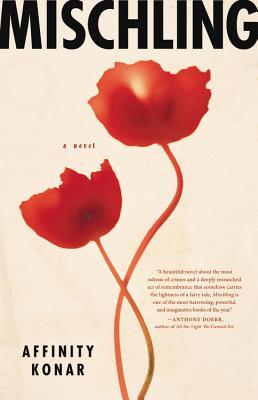
Mapping the Bones
Book Description
Amidst the chilling shadows of World War II, a Jewish girl and her twin brother grapple with their shattered lives in the harrowing labyrinth of a Nazi-occupied world. As they navigate a landscape fraught with danger and despair, their bond is tested by cruelty, hope, and the desperate will to survive. Each choice can lead to life or death, and trust becomes both a lifeline and a weapon. With every heartbeat echoing their fight against fate, will they uncover the strength within themselves to reclaim their future, or will darkness consume them both?
Quick Book Summary
"Mapping the Bones" by Jane Yolen is a gripping and emotional historical novel set during the Holocaust, following the journey of Jewish twins Chaim and Gittel as they struggle to survive Nazi persecution. After being forced from their home in the Łódź Ghetto, the siblings endure harrowing circumstances, including family separation, betrayal, and the brutal conditions of a labor camp. Their resilience is tested at every turn, and they rely on each other’s courage, resourcefulness, and love to maintain hope amidst despair. Drawing on the motifs of classic fairy tales, the novel explores themes of survival, identity, and the power of storytelling to give voice and meaning to trauma. Yolen’s lyrical prose and richly developed characters offer a poignant exploration of hope and loss during one of history’s darkest periods.
Summary of Key Ideas
Table of Contents
Sibling Bonds Under Duress
Chaim and Gittel, Jewish twins growing up in Nazi-occupied Poland, find their world shattered by the horrors of the Holocaust. Their close-knit family is uprooted from the Łódź Ghetto and forced into hiding, fleeing as the Nazi regime tightens its grip. Early in their journey, they face family separation and betrayal by those they once trusted, underscoring the pervasive danger and uncertainty of their world. The trauma and loss they endure leaves an indelible mark on their psyches, pushing them to mature rapidly.
Storytelling as Survival
Within the terror of their circumstances, storytelling becomes a crucial tool for survival. Chaim, an aspiring poet with a stutter, uses his passion for words to comfort his sister and himself, echoing the fairy tales of the Brothers Grimm in the structure and themes of his own poetry. Narratives and imagination offer both siblings a means of escape and resilience, providing small moments of hope and resistance in an otherwise bleak environment. These stories act as a lifeline, connecting them to their lost family and culture.
Loss, Betrayal, and Trust
Trust is both a precious resource and a dangerous liability in the world Yolen portrays. Chaim and Gittel experience both the deep cruelty and rare kindness of others—betrayal by those who could save them, and unexpected alliances with fellow victims. The novel explores the difficult calculations they must make about whom to trust and how trust can be both weaponized and cherished. The twins’ reliance on one another strengthens their resolve, but it also raises haunting questions about sacrifice and survival.
Resilience Amidst Atrocity
Resilience emerges as a central theme, highlighted through the twins’ endurance during their time in the labor camp. Forced labor, starvation, and violence push them to their physical and psychological limits, yet Chaim and Gittel’s determination to survive remains unbroken. Small acts of rebellion, moments of tenderness, and the unwavering bond between the siblings allow them to persist despite overwhelming odds. Their survival is a testament to the human capacity for hope and adaptation in even the most dehumanizing circumstances.
Coming of Age in a Time of War
Ultimately, "Mapping the Bones" is a coming-of-age story amidst atrocity. As Chaim and Gittel contend with trauma and loss, they are forced to confront profound moral dilemmas and the darkness both around and within them. The novel closes on themes of memory, healing, and the importance of bearing witness. Through their journey, the twins learn that survival is more than mere endurance—it is an act of reclaiming identity, voice, and the possibility of a future shaped by their own stories.
Download This Summary
Get a free PDF of this summary instantly — no email required.





